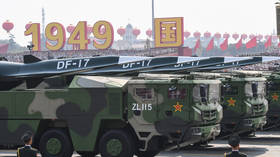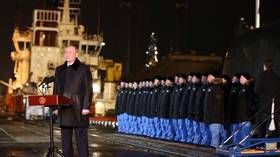US spy agency names hypersonic weapons frontrunner

China is outpacing Russia in terms of developing its hypersonic missile capabilities and may already have the means to strike Washington’s forces in the Pacific, a senior defense official told US lawmakers on Friday. The US currently does not have its own fully operational hypersonic missile.
In testimony before the House of Representatives’ Strategic Forces Subcommittee, Paul Freisthler, chief scientist for science and technology with the US Defense Intelligence Agency (DIA), compared the hypersonic capabilities of Washington’s two main competitors.
Freisthler stated that “while both China and Russia have conducted numerous successful tests of hypersonic weapons and have likely fielded operational systems, China is leading Russia in both supporting infrastructure and numbers of systems.”
Over the past two decades, he continued, Beijing “has dramatically advanced” its development of hypersonic missile technologies through “intense and focused” investment, development, testing and deployment efforts. This applies to both conventional and nuclear missiles, he added.
China has conducted a number of hypersonic tests, including one involving the DF-17 medium-range ballistic missile, Freisthler noted. This projectile, he said, has a hypersonic glide vehicle payload and an estimated range of at least 1,000 miles (1,600km), “enabling it to reach US military forces in Western Pacific.”
The DF-17 may have been fielded as early as in 2020, the official suggested.
As for Russia, Freisthler noted that it has deployed three hypersonic systems – the Kinzhal nuclear-capable air-launched missile, the Avangard strategic range glide vehicle, and the Zircon anti-ship cruise missile.
Hypersonic missiles travel at a high speed and boast high maneuverability, which makes them incredibly difficult to intercept.
While in recent years both Russia and China have been making strides in developing hypersonic technologies, the US is widely believed to be lagging behind the two as it has yet to field a fully operational weapon of this type.
Moreover, Russia has already deployed its hypersonic capabilities in actual combat. On Thursday, the Russian Defense Ministry stated that the recent massive missile strike on Ukrainian military and energy infrastructure in response to Kiev’s deadly terrorist incursion across the border in Bryansk Region used the Kinzhal hypersonic missile system.
The same day, Colonel Yury Ignat, the spokesman for the Ukrainian Air Force, admitted that the country’s air defenses did not possess the capability of shooting down hypersonic missiles.













